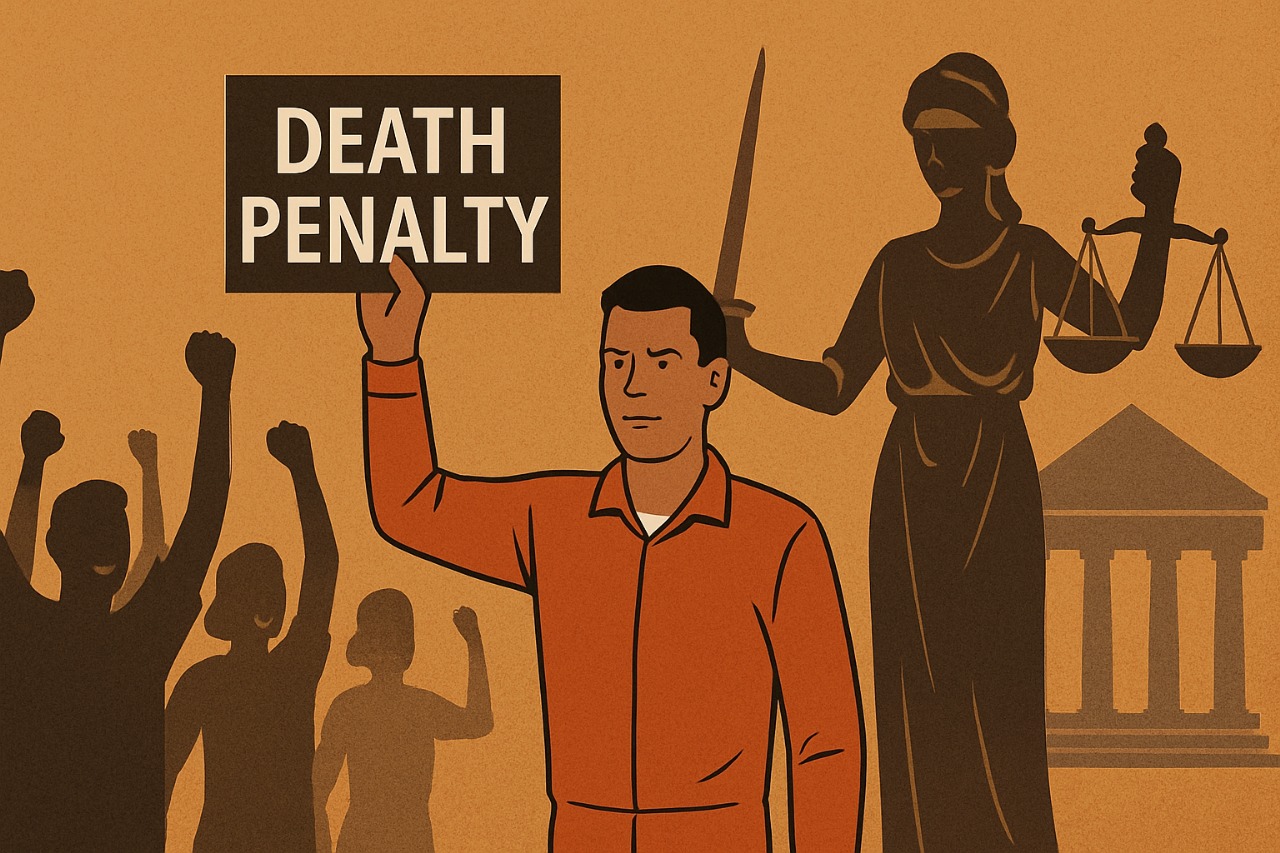Introduction
India’s laws prescribe severe punishment for rape, including the possibility of capital punishment in extreme cases. After the 2012 “Nirbhaya” gang‑rape and murder case, Parliament passed amendments (Criminal Law Amendment Acts, 2013 and 2018) introducing new capital‑punishment provisions. Today, the Indian Penal Code imposes death or life imprisonment for the most heinous rape offenses. For example, Section 376A IPC (added in 2013) covers rape causing death or a “persistent vegetative state” (minimum 20 years–life). The 2018 amendment added Sections 376AB and 376DB: rape of a girl under 12 and gang‑rape of a girl under 12 are punishable by life imprisonment or death. (Other amendments raised minimum terms and expedited trials.)
Legal Framework Under BNS for Rape and Death Penalty
The BNS mirrors the IPC in defining and punishing sexual offences, but reorganises sections. Key provisions include:
- Section 63: Punishment for rape – minimum 10 years to life imprisonment.
- Section 64(2): Rape causing death or persistent vegetative state – punishable with death or imprisonment not less than 20 years, extendable to life imprisonment.
- Section 65(1): Rape of a woman under 18 – harsher minimum punishment (20 years to life or death if aggravated).
- Section 65(2): Gang rape of a girl under 18 – life imprisonment or death.
- Section 66: Rape of a woman under 12 years – life imprisonment or death.
These provisions under the BNS continue the stringent stance established by IPC Sections 376A, 376AB, and 376DB, but reflect a modernised and reorganised format.
‘Rarest of Rare’ Doctrine in Capital Punishment
The Supreme Court’s “rarest of rare” doctrine governs the death penalty in India. In Bachan Singh v. State of Punjab (1980), the Court upheld capital punishment as constitutional but emphasised it must be “imposed not in a routine manner, but only in the rarest of rare cases”. The Court instructed that life imprisonment should generally be the rule, death an exception, and aggravating and mitigating factors must be weighed. Subsequent rulings have applied this standard carefully. For instance, in Mohd. Abdul Mannan v. Bihar (2011) – a brutal rape‑murder of a child – the Court upheld death, saying the cruelty “is appalling” and clearly “falls in the category of the rarest of the rare”. In the landmark Mukesh & Anr. v. NCT of Delhi (2017) (the Nirbhaya case), the Court similarly found the “gruesome offences” committed with “highest viciousness” to be “rarest of rare”. By contrast, in Amrit Singh v. Punjab (2006) (another child rape‑murder), the Court commuted death to life, finding that despite the brutality, the offender did not cross the threshold. These cases show that even among horrendous rape cases, only some are deemed to “shock the collective conscience” enough to warrant death.
Application to Rape Cases: Supreme Court and High Court Decisions
In recent years, Indian courts have grappled with which rape cases qualify as “rarest of rare.” High Courts occasionally affirm death sentences in egregious cases. For example, in Ramkirat Goud v. Maharashtra (2021), the Bombay High Court confirmed a death sentence for a man who raped and murdered a 3‑year‑old in a “diabolical manner,” calling it “degradation… depravity and perversity” fit for the gallows. The bench warned that the safety of a girl child is “of paramount importance” to society. Similarly, in Haresh Rajput v. State of Maharashtra (Pune, 2011), the HC initially enhanced a life term to death for a 10‑year‑old’s rape‑murder, stating “courts must hear the loud cry for justice… in cases of heinous crime of rape”. However, in both cases the Supreme Court later intervened: in Rajput (SC, 201,4) the death sentence was commuted back to life imprisonment, because the High Court’s enhancement was “not justified”. And in Goud (SC, 2025), the death sentence was set aside entirely due to evidentiary lapses in the investigation.
By contrast, the Supreme Court has often overturned trial‑court death sentences in rape cases. Media reports show a string of reversals: for example, on 4 March 2025, the Court acquitted Karandeep Sharma (alias Razia) of child rape‑murder due to contradictions and flawed DNA evidence, calling the trial “”opsided”. Similarly, on 7 May 2025, the SC quashed the death sentence of Ramkirat Goud (the 3‑year‑old’s case) after noting “shabby & perfunctory” investigation. In late 2023, SC benches acquitted or commuted other death‑row cases as falling short of the rarest‑rare standard. Indeed, for the second year in a row, the SC did not uphold a single death sentence (of any crime). These trends reflect strict judicial scrutiny: courts routinely require clear, unquestionable proof of both guilt and the particularly heinous nature of the crime before letting a death verdict stand.
Death Penalty Statistics in Rape Cases
Reliable data underscore the rarity of executions and the scale of death sentences. According to Project 39A (NLU Delhi) statistics, trial courts imposed 139 death sentences in 2024 (for all crimes) – higher than the average since 2016 – yet the Supreme Court confirmed none and commuted sentences of seven prisoners and acquitted one. At year-end 2024, 564 people were on death row nationwide, “the highest since the turn of the century”. Amnesty International reported 120 new death sentences recorded in 2023 (down from 165 in 2022). Most of these sentences are for murder; executions in rape cases are vanishingly rare. India’s only recent execution for a rape conviction was the Nirbhaya case – four men hanged in January 2020 after the Supreme Court upheld their death sentences.
(The National Crime Records Bureau does not separately tally “death sentences for rape”, but it is clear from the above that very few rape convictions end in execution. The abovementioned project 39A and Amnesty data are the best proxies for overall death‑penalty trends.)
Debates and Expert Opinions
The use of the death penalty in rape cases is fiercely debated. Proponents argue it serves justice and deterrence for heinous crimes. During the 2018 amendments, supporters (even some judges) called raping a pre‑pubescent girl “a dastardly act” warranting the ultimate punishment. But critics – including many jurists and human‑rights advocates – counter that capital punishment is ineffective and risky. The Justice Verma Committee (2013) explicitly opposed death for rape even in “rarest” cases. Likewise, India’s Law Commission (2015) recommended abolishing the death penalty for all crimes (except possibly terrorism), noting that capital punishment has no “valid penological justification”.
Legal experts point out grave downsides. Many rape victims know their assailants so that a mandatory death penalty could discourage reporting (families would fear sending a relative to the gallows). Activists note that equating rape with murder risks giving perpetrators no incentive to spare victims; as a Delhi High Court bench warned, once rape and murder carry the same punishment, offenders “would [have] allow[ed] their victims to survive”. Procedural safeguards also suffer in high-profile cases: Project 39A director Maitreyi Misra observes that from 2000–2015, some 95% of rape-related death‑row sentences were ultimately overturned or commuted. The Supreme Court has repeatedly reminded lower courts to consider mitigating factors at sentencing. For example, in Manoj v. MP (2022), the Court stressed the “urgent need” to ensure mitigating circumstances are heard at trial to avoid “slipping into a retributive response”.
Human‑rights groups in India and abroad uniformly argue that the death penalty is not a suitable response to rape. They point to global experience: today 113 countries have abolished capital punishment and none has demonstrated that death for rape deters sexual violence. The World Coalition Against the Death Penalty notes that making rape a capital offense may even undermine victims’ interests. The United Nations and many NGOs have urged India to restrict or end capital punishment; India joined a UN moratorium resolution in 2022 and 2023, reflecting growing international consensus against mandatory death for rape.
Public Reaction and Legislative Responses
High‑profile rape cases in India have consistently provoked public outrage and legal reforms. After the 2012 Nirbhaya case, massive street protests and media attention prompted the Modi government to pass criminal‑law amendments in 2013. Although the Justice Verma Committee (set up post‑Nirbhaya) had advised against extending death to rape, Parliament overrode this and enacted Section 376A (death if rape causes death/PVS). Similarly, the 2018 Kathua (and Unnao) cases – which involved the abduction, gang rape and murder of a minor – led to emergency Cabinet approval for new legislation. In April 2018, the government issued an ordinance (later an Act) making rapes of girls under 12 death‑eligible. These steps reflect lawmakers’ desire to address “public revulsion” and “the loud cry for justice”.
Most recently, the Aug. 2024 gang‑rape and murder of a female doctor in Kolkata sparked massive protests by doctors and citizens. In response, the West Bengal Assembly passed (Sept. 2024) the “Aparajita” Women and Child Bill. It mandates life imprisonment for rape, with mandatory death if the victim dies or is left in a vegetative state. This law (awaiting presidential assent) goes beyond current IPC provisions and reflects continuing political pressure to harden punishments. Critics warned this could backfire: mental‑health activists and legal experts observed that such “knee‑jerk” measures may violate the constitutional ban on mandatory penalties, and pointed out that most death‑penalty cases (about 95%) eventually end in acquittal or commutation.
Overall, the landscape remains unsettled. On one hand, India’s penal code now allows death for certain rape crimes, and legislatures have repeatedly toughened penalties after shocking cases. On the other hand, courts applying the ‘rarest of rare’ rule have been very reluctant to carry out death sentences in rape cases – primarily when investigational or procedural flaws exist. As of 2025, no death sentence for rape in India has ever been finally executed without commutation or acquittal beyond the Nirbhaya case. The debate continues over whether capital punishment in rape cases truly serves justice and deterrence, or undermines India’s legal system and human‑rights commitments.
About the Author
Ruhan Deb is a third-year law student at Symbiosis Law School, Noida. He is keenly interested in litigation, focusing on Criminal Law and Competition Law. Beyond the legal realm, Ruhan is passionate about global politics and history, complementing his analytical approach to legal studies. His multidisciplinary interests reflect a commitment to understanding law in broader social and geopolitical contexts.

